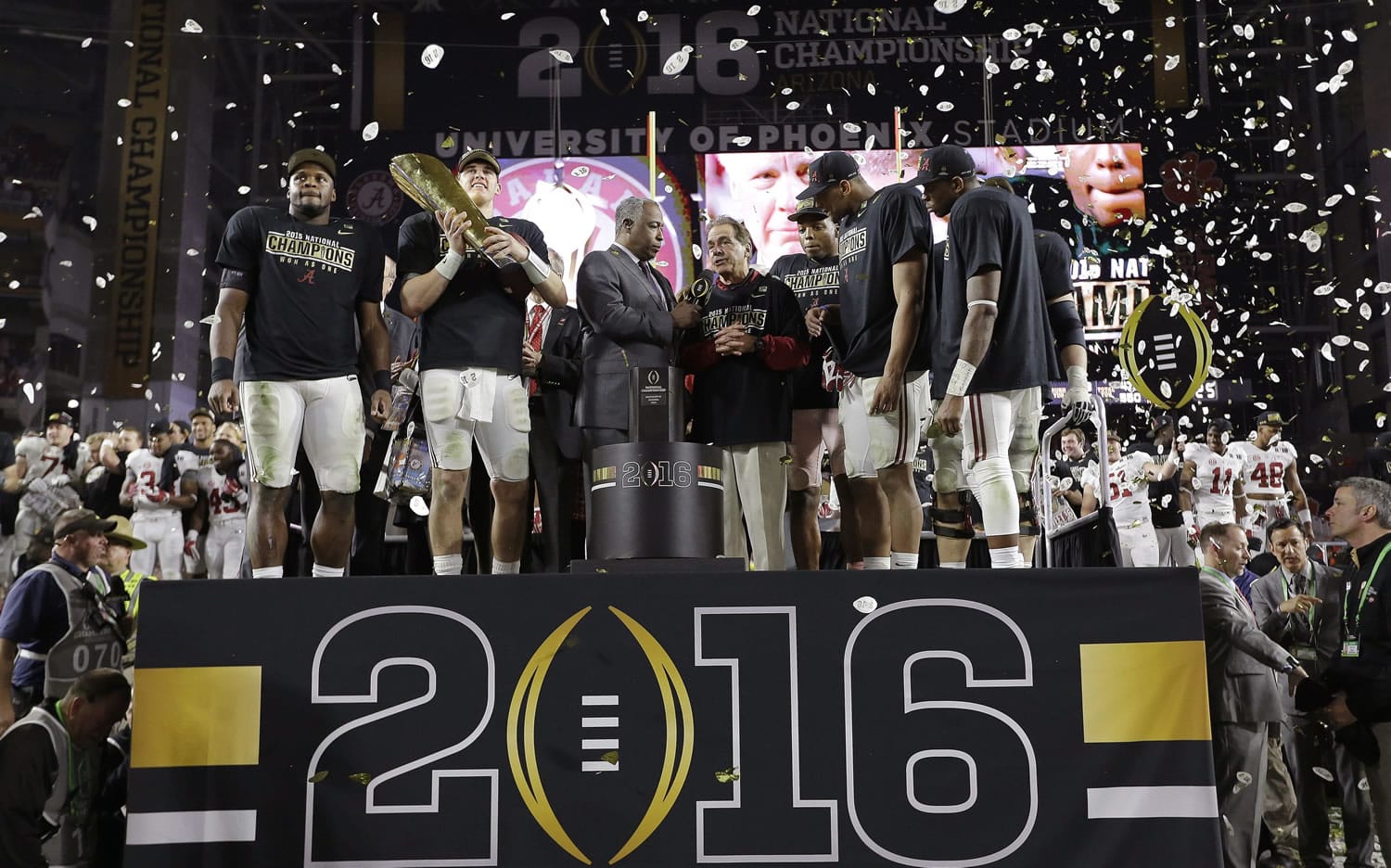Last year was a rough one for ESPN, full of big-name departures, doom-and-gloom forecasts about the company’s once-unparalleled revenue streams and layoffs, with about 300 employees let go amid cost-cutting demands from parent company Disney.
This year isn’t starting any better, and not simply because of plummeting TV ratings from the College Football Playoff semifinal games on New Year’s Eve and this past Monday’s title game.
A survey of 1,582 consumers commissioned last week by BTIG Research found that 56 percent of respondents would remove ESPN and ESPN2 from their cable packages to save $8 per month, which is about the cost cable subscribers pay to receive the networks. Broken down by gender, 60 percent of female respondents and 49 percent of male respondents said they would remove the sports networks to save money.
“Even more interesting, results did not vary by age, with millennials, Gen X’ers and boomers all similar, adjusting for the survey’s margin of error,” BTIG Research’s Richard Greenfield wrote in a story about the survey results.
ESPN’s business plan has long been dependent on fees paid by cable subscribers, most of whom pay for the channel whether they watch it or not as part of a so-called “bundle.” But that model has been threatened by cord-cutting — consumers jettisoning cable altogether in favor of online streaming services such as Netflix or HBO Go — combined with the astronomical increases in fees paid by ESPN to sports leagues to carry live events. Last year, for instance, Disney/ESPN signed a new deal with the NBA that will cost the network $1.4 billion per year over nine years to show professional basketball games, three times the amount of the previous rights agreement.
Seven million U.S. households have dropped ESPN in the past two years, Disney said in a federal filing submitted in November. Its subscription base is down to 92 million homes, the lowest in nearly a decade, and the operating profit Disney expects to receive from ESPN — its most profitable cable channel — is expected to flatten this year, leading to a cost-cutting mandate from Disney.
To combat these losses, Disney chief executive Robert Iger has said ESPN is prepared to offer a direct-to-consumer subscription service, in which consumers would pay for ESPN programming by itself without subscribing to a cable package. However, this plan also presents a certain amount of risk. As The Post’s Drew Harwell noted last month, if 30 percent of ESPN’s current subscribers shifted to paying for the network via an online service, Disney would need to charge about $20 per month to make up for the revenue from lost cable subscribers.
BTIG Research also asked about this in its survey, and its results were similarly bleak for ESPN and Disney. The survey found that only 6 percent of respondents would subscribe to ESPN and ESPN2 at $20 per month, with 85 percent indicating they wouldn’t and 9 percent saying they weren’t sure.
“The reality is that ESPN would likely have to charge dramatically more than $20/month/sub in a direct-to-consumer model, given the dramatic reduction in penetration rates,” Greenfield writes, pointing out another strike against this plan: Many consumers wouldn’t subscribe to such a package on an annual basis, instead turning it off or on depending on the time of year (NFL fans only subscribing during football season, for instance).
An ESPN spokesman said the network would have no comment about the survey results. In comments made to CNBC in July, Iger described as “conjecture” the predictions that Disney would have to charge $20 and up for a direct-to-consumer ESPN service to be profitable. In August, he told CNBC that the bundling of ESPN in cable packages still is a viable business model.
“Obviously, the bundle delivers great value to ESPN and will continue to,” Iger said. “The bundle is not going away. The bundle is actually still relatively strong when you look at it given all the competition that’s in the marketplace and you look at what percentage the bundle represents, not just in terms of revenue but in terms of how people watch television. It’s still the dominant form of television viewing in the home … ⅛ESPN is one of the strongest brands out there, and if you want to have one brand during a time of such change, I would argue it’s ESPN.”
And Iger has a point. Because ESPN has gobbled up the rights to nearly every sporting event worth watching, sports fans will continue to tune in. Case in point: While ratings dipped for Monday’s College Football Playoff title game compared with the 2015 numbers, it still was the most-watched cable program since that 2015 game and drew the sixth-best cable TV rating ever. Of the 54 most-viewed cable telecasts ever, ESPN has broadcast 49 of them. The audience for sports, clearly, is there and isn’t going anywhere.
But can that audience carry ESPN forward in the way in which it’s accustomed? That remains to be seen.



